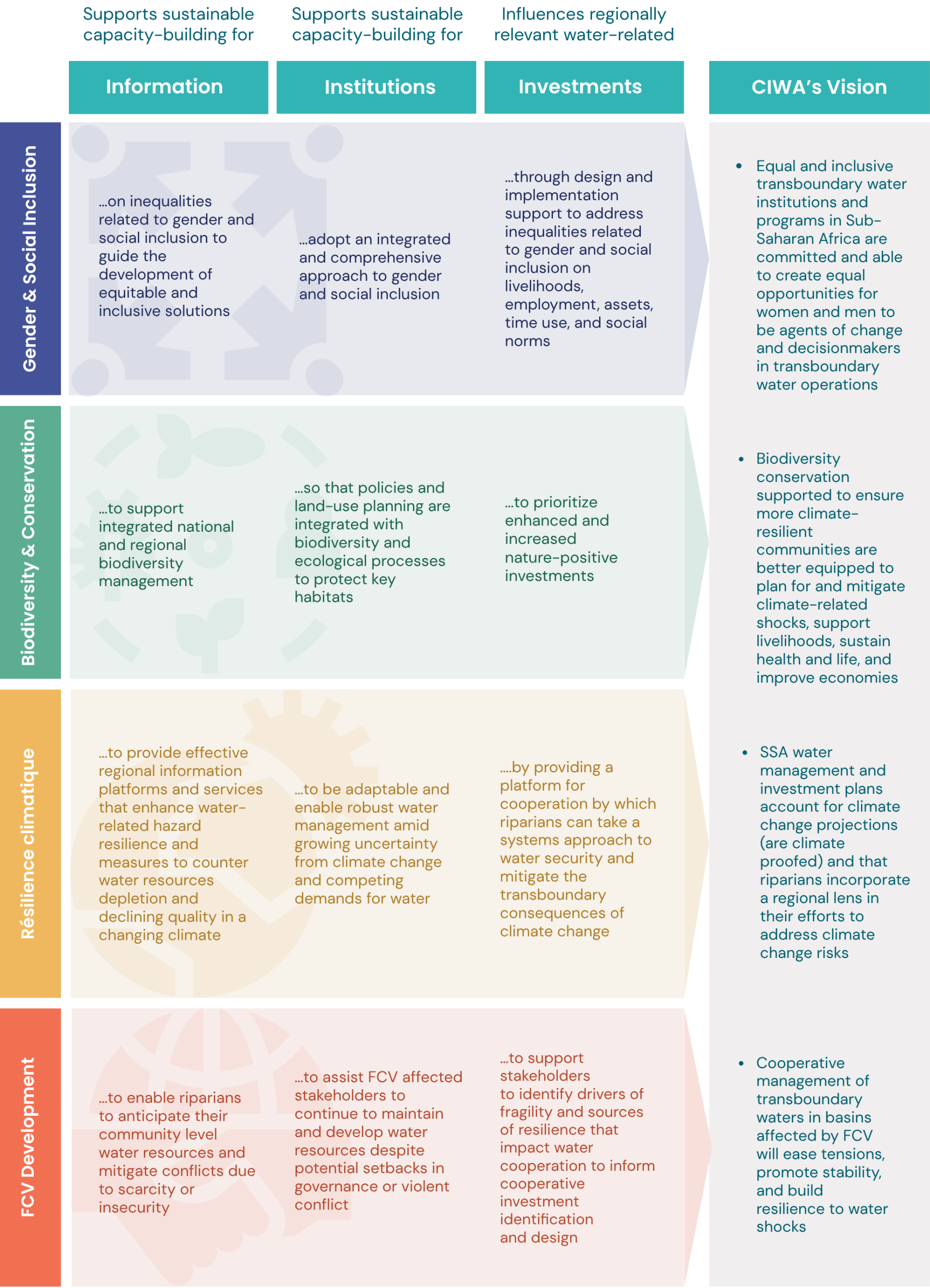Our Approach
Transforming Challenges into Opportunities
The World Bank’s Cooperation in International Waters in Africa program—CIWA—is at the forefront of tackling Sub-Saharan Africa’s most urgent water-related challenges and transforming them into opportunities for resilience and growth. Challenges include:
- Water insecurity
- Climate change impacts including biodiversity loss
- Poverty, fragility, and cross-border tensions
- Gender inequality
A Unique Force for Collaboration
Since 2011, CIWA has catalyzed change by accelerating transboundary water cooperation in Sub-Saharan Africa to enable governments, river basin organizations, civil society groups, and others to make evidence-based decisions about water resources management and development. CIWA is:
- The only organization solely dedicated to this critical mission.
- A key player in realizing the World Bank’s vision for a sustainable, resilient, and inclusive Africa.
- A program with a proven track record of inspiring countries to work together for their mutual benefit.
Our Impact
CIWA’s work aligns with the World Bank’s mission to end extreme poverty and boost shared prosperity on a livable planet. CIWA consistently gets results by working across three pillars—information, institutions, and investments.
CIWA has catalyzed:
- $17.4 billion in investments (both mobilized and potential) to manage watersheds, develop groundwater, build storage, and more.
- 85.9 million people have benefited from mobilized investments or likely will benefit from potential investments influenced by CIWA.
How CIWA is Evolving to CIWA 2.0
CIWA supports the provision of regional public goods for prosperity on a liveable planet. Cooperation on transboundary waters management is a prerequisite for achieving such key regional public goods as conflict prevention, biodiversity protection, and climate resilience and for delivering on the Sustainable Development Goals (SDGs) for economic development, poverty reduction, and human health. Regional challenges (e.g., climate change, population growth, migration) that put pressure on regional public goods require regional solutions. Here are the six ways CIWA is evolving:
Renewed Strategic Focus
Harmonizing diagnostic work with lending pipelines, focusing on biodiversity, climate resilience, gender equality, and fragile contexts.
Enhanced Cross-Cutting Themes
Every investment now incorporates pathways for change through FCV, GESI, biodiversity, and climate resilience frameworks.
Diversified Investment Portfolio
Expanding beyond large infrastructure to include groundwater management, nature-based solutions, biodiversity, and livelihood projects.
Scaling Up Impact
Leveraging World Bank lending and regional financing through programs like HoA Groundwater for Resilience and Regional Climate Resilience Program.
Enhanced Community Engagement
Doubling down on subsidiarity by elevating communities and civil society roles in peace building and water management.
Revised Monitoring & Evaluation
Updated theory of change with specific pathways and outcomes, aligned with the new World Bank Scorecard for better results tracking.
Cross-Cutting Engagements and Pillars of the Program
CIWA cross-cutting themes include biodiversity, climate resilience, gender and social inclusion (GESI), and fragility, conflict, and violence (FCV). These elements serve as crucial pathways for achieving results in the areas of investments, information, and institutions, collectively referred to as the CIWA’s three Is.
The CIWA 2.0 ToC elevates the cross-cutting sectors as the pathways for change that deliver the regional outcomes. This new formulation also anticipates aligning where possible with the new World Bank Scorecard.



